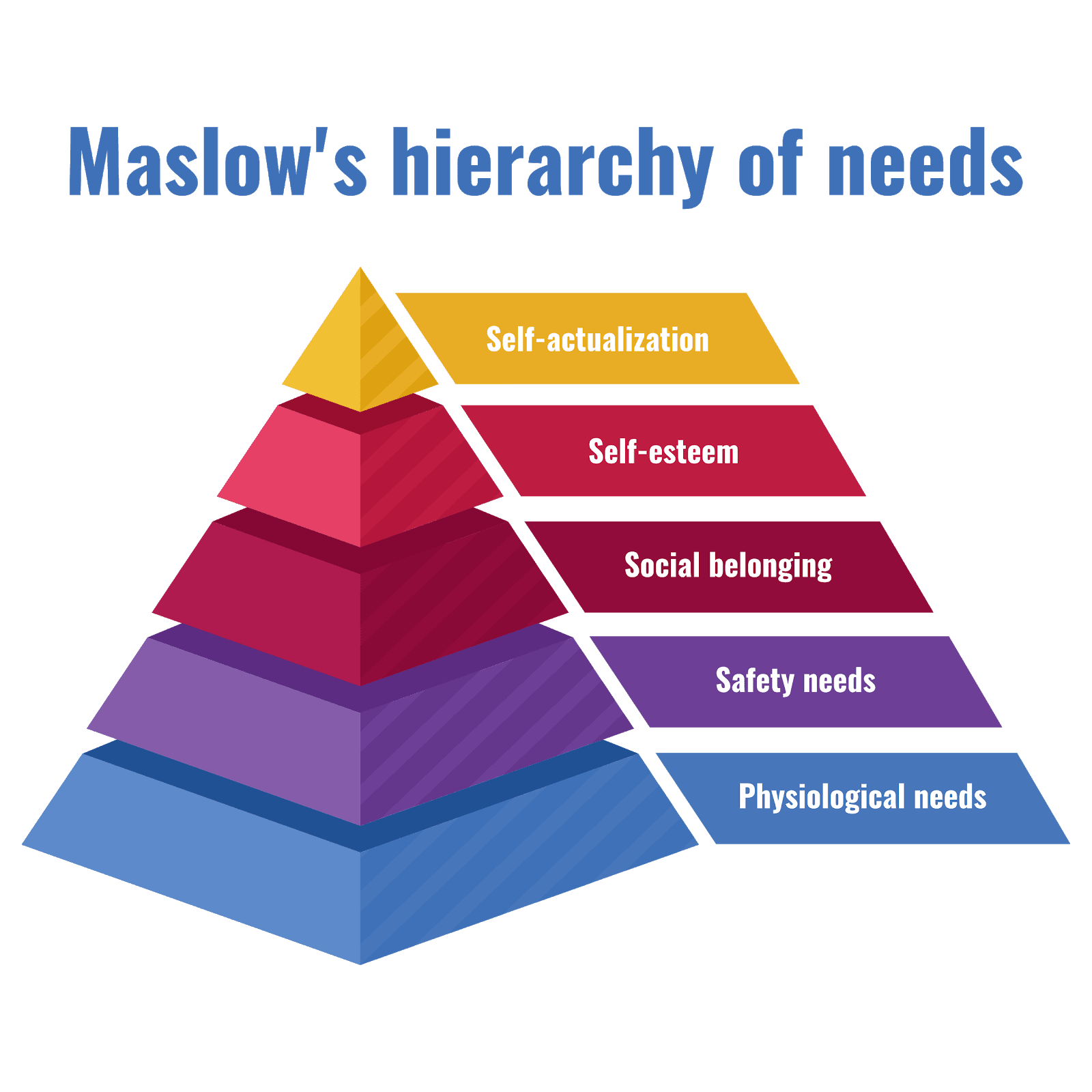Our need for safety
The need for safety is fundamental. In his famous 1943 paper, Abraham Maslow outlined his hierarchy of human needs, ranking them from the largest and most fundamental at the bottom to the need for self-actualization at the top.

According to his theory, an individual’s safety needs take precedence and dominate behavior once their physiological needs are satisfied. People need to be safe from harm. When physical safety is not present, they may experience stress disorder or trauma.
Children especially display a greater need to feel safe, and thus, the safety level is more likely to dominate. In Maslow’s hierarchy, people seek safe environments, shelter, job security and health before any higher level of survival.
Organizations, students and communities deserve an environment where they can stay safe and reach their full potential. A safe environment is one where learners and workers feel physically, emotionally, and socially comfortable.
Children learn best when they sense that they are protected and know that their needs will be met by thoughtful and caring teachers and parents. An unsafe classroom environment is typically not conducive to learning. In fact, a lack of safety becomes a serious distraction. In such an environment, the student may feel prompted to fight or flee.
Safety culture
In a safe community, every educator is dedicated to the safety of students and staff. And, every worker is personally committed to his or her own safety as well as each coworker’s. Safety features prominently in the culture of the organization or community.
Living in a way that supports this culture of safety requires a change in attitude that influences the person’s daily habits and lifestyle, at school, at home and on the job.
From school board members to workplace support staff, everyone is committed and vigilant. Indeed, safety culture is proactive and systemic, and leadership works diligently each day to promote it. Importantly, in safe environments, people take action when it is needed.
Creating a culture of safety
The on-going process of building a culture of safety involves the entire community. Enlist everyone within the organization as well as key players in the external community—first responders, mental health providers, law enforcement, neighborhood leaders, houses of worship and non-profits.
The goal is for safety to become part of everyday life where we are confident that whatever happens we have the skills, training and tools to respond effectively.
Organization leaders drive the evolution of safety culture by demonstrating their own commitment to safety and providing the resources to achieve results. A leader modeling safety behavior, regardless of the emergency, establishes the nucleus of safety culture that attracts and encourages participation. Without the nucleus, the culture fades.
As leaders demonstrate safe behavior, create and enforce custom emergency operations plans, train the community and practice procedures, members of the community are more likely to internalize the behavior and follow.
As you would expect, consistent and sustained communication about safety accelerates progress. Transparent communication must provide consistent and sustained messages to be heard and supported. Include families and external resources in addition to organization members in all important communications. Effective communication ensures immediate access to emergency procedures.
A Positive, Holistic Approach
The most effective safety solutions employ a positive, holistic approach to empower communities with the confidence they need to create cultures of safety, offering resources and tools across the full safety spectrum.
The National Preparedness Goal (NPG) defines success as a secure and resilient Nation with the capabilities required across the whole community to prevent, protect against, mitigate, respond to, and recover from the threats and hazards that pose the greatest risk.
To support the National Preparedness Goal, Navigate360 defines its safety pillars of Prevent, Prepare, Respond and Recover to closely align with the five NPG mission areas.
Prevent – Prevention means identifying problems before they become threats. Through critical research and practices established by well-respected agencies, Navigate360 solutions identify and assess vulnerabilities and help move people of concern off a path of violence.
Prepare – Emergencies happen. When organizations prepare thoroughly, everyone knows exactly what to do. Navigate360 helps organizations prepare for all the many types of potential emergencies communities face.
Respond – Knowing exactly how to respond from the first moment of an emergency is crucial for all communities. Accurate information on the status of every individual aids first responders, helps to direct resources properly and enhances overall communication.
Recover – Every incident is different, but there is a way to plan for what happens when it’s over. Navigate360 eLearning tools help leaders and staff better understand what to expect. They guide leaders to organize and assemble approved resources and contacts for rebuilding, counseling, funerals, legal matters, and other post-emergency priorities.
Benefits of a safe environment
Navigate360 is a comprehensive partner for the entire continuum of modern safety—with education, technology, services and tools specifically designed to help those we serve prevent, prepare for, respond to and recover active shooter events and a full range of emergencies.
ALICE Training®, NaviGate Prepared and SafePlans have come together in Navigate360. Together, they help leaders manage the full spectrum of safety with a range of training and education, technology, and safety services to help them build comprehensive safety plans that generate:
More confidence in taking control, protecting others and saving lives
The age-appropriate and organization-specific ALICE active shooter response methodology empowers organizations and individuals with the confidence to respond to threats in ways that save lives.
ALICE training has been implemented at schools, workplaces, and houses of worship across the nation, helping people understand, prepare and practice the available options to respond to mass violence, no matter where it occurs.
Thriving communities
A safe and secure atmosphere allows students to thrive and live up to their potential. There is psychological evidence that a smooth reunification process can make students less likely to experience emotional issues following a traumatic event.
Communities flourish when people feel safe, physically and emotionally. As organizations and individuals more confidently act in any situation, this modern approach to safety helps create communities that thrive.
More time and resources to focus on core mission
Safety process automation saves time and money because organizations make fewer mistakes and communicate well. They confidently make better, well-informed decisions, lower their operational costs and achieve compliance. For example, Navigate360 solutions cut down the time required to schedule and log drills while maintaining accountability and transparency.
Invest in our future
Leaders across all types of communities know that professional support is required for modern and effective safety initiatives. As a smart, affordable and impactful investment, Navigate360 tools empower school, business and community leaders to effectively create a culture of safety where people thrive and focus on their true mission.
We boldly confront the challenges communities face by creating safe environments. Comprehensive education, technology, and services make Navigate360 different from standalone safety solutions. This modern, broad approach helps organizations and individuals act more confidently in any situation.
Navigate360 solutions span the full spectrum of safety—from prevention and preparation through response and recovery—harnessing rapid innovation and unparalleled expertise to provide the solutions necessary to build safer tomorrows.




